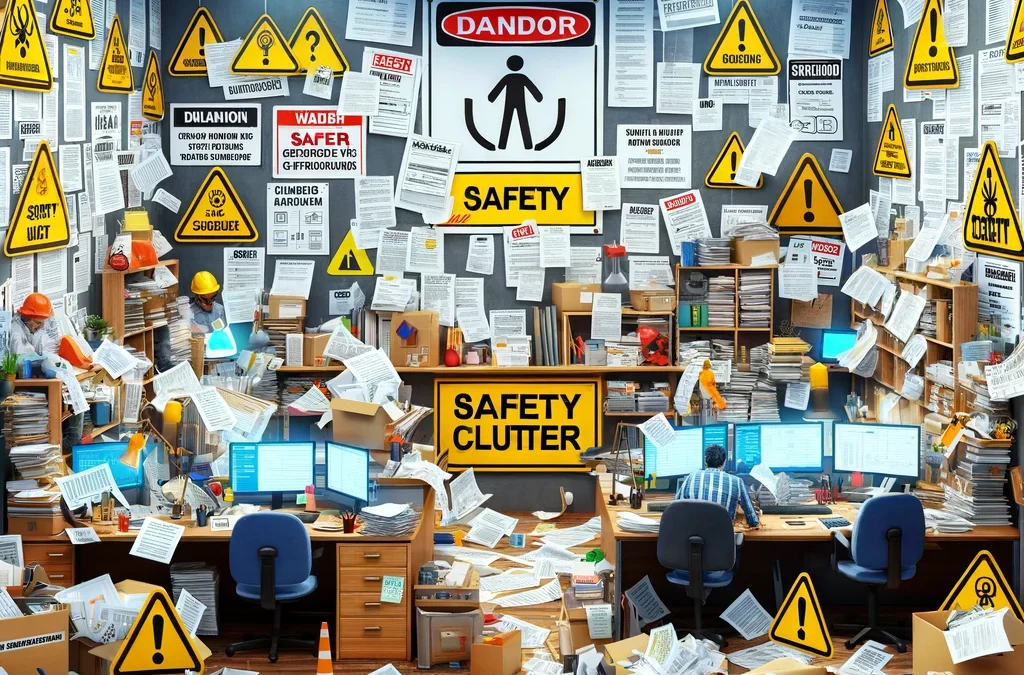In the world of workplace safety, few practices are as widespread as the “Take 5”. Originating from a variety of safety traditions and evolving over decades, “Take 5” is now a staple in many industries, especially in high-risk environments. But does this safety ritual truly enhance workplace safety, or is it just another piece of bureaucratic red tape? Let’s explore the pluses and minuses of “Take 5” safety practices. This blog post was inspired by this article https://www.mdpi.com/2313-576X/8/2/27 and the interaction that I had with one of the authors.
Before I kick off, I will say that it is my belief that, any process put in place has to be right for the company at the time. i.e. while a Take5 may not work for you and your business, it might work well for another. I am also a firm believer that any process like a Take 5 is only ever as good as its implementation. I have seen Take 5 system implemented well and work fantastically and other examples where it was poorly implemented and was simply a waste of time.
The Pluses of “Take 5” Safety Practices
- Structured Safety Ritual: “Take 5” provides a structured moment for workers to pause and consider the hazards of their tasks. This ritual can be particularly beneficial in high-risk environments where constant vigilance is required. The regular practice of stopping and thinking about safety can instil a safety-first mindset and allow your people to have an open dialog about safety..
- Documentation and Accountability: By requiring workers to fill out a form, “Take 5” creates a paper trail that can be used to demonstrate due diligence. This can be useful for both internal reviews and regulatory compliance. It shows that the company is taking proactive steps to ensure safety, which can be critical in the aftermath of an incident. But also consider what you are doing with the documented Take 5s. I mean if you never review any of the Take 5s until there is an incident, dose it really provide you with due diligence or does it do the opposite?
- Encourages Hazard Awareness: The checklist format of “Take 5” helps workers identify potential hazards they might otherwise overlook. This can be especially helpful for less experienced workers who may not yet have developed a keen eye for safety risks and allows an opportunity for more experienced operators to pass on skills and knowledge.
- Promotes a Safety Culture: Regularly performing “Take 5” can be one of the tools to help to embed safety into the company culture. It reinforces the message that safety is everyone’s responsibility (as long as everyone is involved!) and that the company places a high priority on safe work practices.
- Flexibility in Application: “Take 5” can be adapted to various industries and tasks, making it a versatile tool. Whether it’s a physical card, a mobile app, or a simple verbal checklist, the principles of “Take 5” can be tailored to fit different work environments and practices.
The Minuses of “Take 5” Safety Practices
- Ineffectiveness in Practice: Studies have shown that “Take 5” often fails to improve actual safety outcomes. Workers frequently pre-fill forms, batch them together, or complete them after tasks, rendering the practice ineffective in real-time hazard identification and planning.
- Compliance Over Safety: The emphasis on filling out forms can shift the focus from genuine safety improvements to mere compliance. Workers might complete “Take 5” checklists just to meet requirements, without truly engaging with the safety process.
- Time-Consuming: Completing “Take 5” forms can be seen as a time-consuming task, especially when workers have to do it multiple times a day. This can lead to frustration and rushed or incomplete forms, further undermining its effectiveness.
- Not Tailored to All Tasks: While “Take 5” is flexible, it often lacks the specificity needed for different tasks. Generic checklists might not address unique hazards of specific jobs, leading to a false sense of security.
- Potential for Misuse: There’s a risk that “Take 5” can be used as a tool for blame rather than safety. For example, I have seen in some cases, completed forms used in incident investigations to assign fault rather than to understand and improve safety practices. Used in this way the process can create a culture of fear rather than one of proactive safety engagement.
- Limited Educational Value: The routine nature of “Take 5” can limit its effectiveness as an educational tool. Workers may not actually learn about new hazards or safety practices, especially if they are simply going through the motions to complete the forms.
“Take 5” safety practices offer both benefits and challenges. While they provide a structured approach to hazard identification and can foster a safety-conscious culture, their effectiveness is often undermined by poor implementation and a focus on compliance over genuine safety improvements. To maximise the benefits of “Take 5,” you should ensure that the practice is properly integrated into safety culture, with a focus on meaningful engagement rather than mere form-filling. By addressing these challenges, “Take 5” can become a more effective tool in the ongoing effort to enhance workplace safety.

